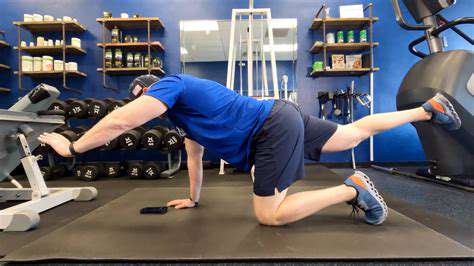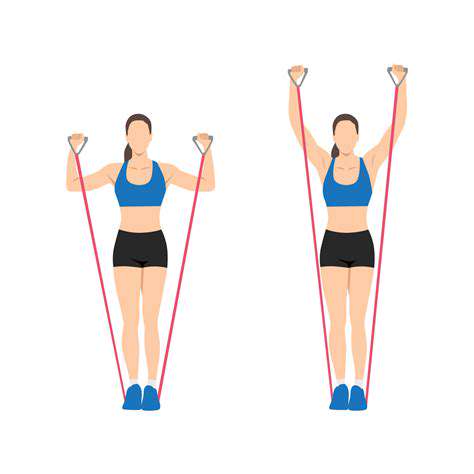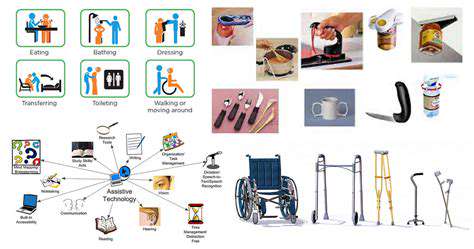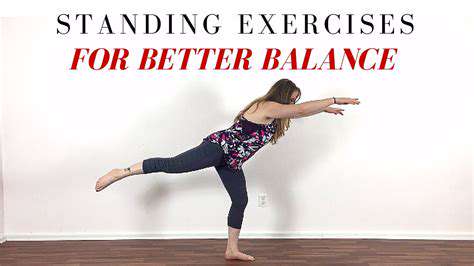Improve Flexibility with Chair Yoga: A Senior's Journey
Introduction to Chair Yoga for Seniors
Getting Started with Chair Yoga
Chair yoga is a fantastic way for seniors to improve flexibility, balance, and overall well-being without putting strain on their joints. Unlike traditional yoga, chair yoga modifications allow you to practice poses while seated, making it accessible and safe for individuals with mobility limitations. Understanding the fundamental principles of chair yoga and establishing a consistent routine will help you reap the numerous benefits and cultivate a sense of calm and empowerment.
Benefits of Chair Yoga for Seniors
Chair yoga offers a multitude of advantages tailored to the specific needs of seniors. Improved balance and coordination are key benefits, reducing the risk of falls. Increased flexibility and range of motion help maintain mobility and ease everyday tasks. Chair yoga also promotes relaxation and stress reduction, fostering a sense of calm and well-being. The gentle movements and mindful breathing techniques help to lower blood pressure and improve cardiovascular health, further enhancing overall physical and mental health.
Adapting Yoga Poses for Chairs
Chair yoga takes the familiar poses of traditional yoga and adapts them for a seated position. For example, the seated forward bend can be modified by simply reaching forward with your hands while maintaining a straight back. Similarly, the seated twist can be performed by gently rotating your torso from side to side. Learning these adaptations is crucial, as it allows seniors to safely and effectively practice yoga without putting unnecessary stress on their joints or backs. Understanding these accommodations is paramount for a safe and effective practice.
Proper Breathing Techniques in Chair Yoga
Mindful breathing is essential in chair yoga, just as it is in traditional yoga. Focusing on deep, conscious breaths helps to calm the mind, reduce stress, and improve overall well-being. Inhale deeply through your nose, filling your lungs completely, and exhale slowly through your mouth. This rhythmic breathing technique regulates your heart rate and blood pressure. Consistent practice of these breathing techniques will enhance your overall experience and allow you to fully engage with the benefits of chair yoga. Regular practice will deepen your connection to your body and mind.
Chair Yoga Modifications for Specific Needs
Chair yoga is highly adaptable, allowing seniors to modify poses based on their individual needs and limitations. If a particular pose is too challenging, you can always adjust it to make it more comfortable. For instance, you might use a chair back for support during certain stretches. If you have any pre-existing medical conditions, consult with your doctor or physical therapist before starting chair yoga to ensure that the exercises are safe and appropriate for your needs. This personalized approach makes chair yoga accessible to a wide range of individuals, maximizing the potential benefits for all.
Creating a Consistent Chair Yoga Routine
Consistency is key to experiencing the full benefits of chair yoga. Start with short sessions, perhaps 10-15 minutes, and gradually increase the duration as you become more comfortable. Make it a part of your daily routine, scheduling it at a time that works best for you. Incorporating chair yoga into your weekly schedule will help improve your overall well-being and provide a regular opportunity for self-care. Creating a dedicated space for your practice can also enhance your experience and make it more enjoyable and fulfilling.
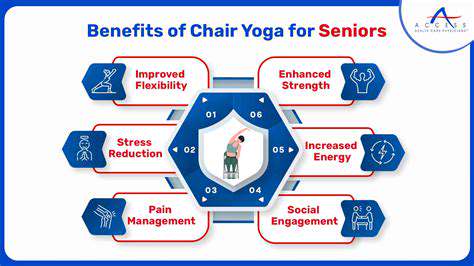
Incorporating Chair Yoga into Your Daily Routine
Benefits of Chair Yoga for Flexibility
Chair yoga offers a fantastic way to improve flexibility without the need for strenuous floor poses. The seated positions allow for a deeper stretch and greater focus on specific muscle groups, leading to improved range of motion and reduced stiffness. This gentle approach is particularly beneficial for people with injuries, limited mobility, or those who prefer a low-impact workout. Regular practice can significantly enhance your body's overall flexibility and suppleness.
By targeting specific muscle groups in a seated position, chair yoga gently stretches and lengthens them. This consistent stretching results in improved joint mobility, which is crucial for maintaining a healthy and active lifestyle. The exercises also improve blood circulation, which further aids in the relaxation and flexibility of muscles and tissues. Over time, this consistent practice can lead to a noticeable reduction in muscle tension and stiffness.
Accessibility and Safety in Chair Yoga
One of the most significant advantages of chair yoga is its accessibility. It can be practiced virtually anywhere, whether at home, in the office, or even in a community center. The use of a sturdy chair ensures safety and stability, minimizing the risk of falls or injuries often associated with floor-based yoga. This makes it an ideal choice for individuals of all ages and fitness levels, including seniors and those recovering from injuries.
The seated nature of chair yoga also allows for modifications to be easily implemented based on individual needs and limitations. This is a key aspect of its safety. If a particular pose is too challenging, modifications can be made, ensuring that the practice remains safe and effective. This adaptability makes it a welcoming and inclusive form of exercise for everyone.
Chair Yoga Poses for Improved Flexibility
Chair yoga incorporates a variety of poses that target different muscle groups, promoting overall flexibility. Seated forward folds, gentle twists, and arm stretches are commonly incorporated. These poses help to lengthen and stretch the muscles in the back, shoulders, and hamstrings, improving spinal mobility and posture. Practicing these poses regularly can significantly increase flexibility in these areas.
Neck stretches, shoulder rotations, and wrist exercises are also important components of chair yoga. These exercises help to improve the range of motion in the upper body, reducing stiffness and promoting a sense of ease and fluidity in the body. Regular practice of these poses can lead to a noticeable reduction in stiffness and an improvement in overall flexibility and mobility.
Integrating Chair Yoga into Your Daily Routine
Incorporating chair yoga into your daily routine doesn't require a significant time commitment. Even short 10-15 minute sessions can yield noticeable benefits. Schedule these sessions into your day, perhaps during your lunch break or before bed. Consistency is key to experiencing the full range of benefits. The benefits of regular chair yoga extend beyond physical flexibility; it can also improve mental well-being, promoting relaxation and stress reduction.
Finding a quiet space where you can focus on your poses is important. Consider using a yoga mat or cushion for added comfort. Using a chair that is stable and provides good back support will also help. Start with a few simple poses and gradually increase the complexity as your flexibility improves. Consistency is key!
Chair Yoga and Overall Well-being
Beyond enhancing flexibility, chair yoga contributes to overall well-being. The gentle movements and mindful focus promote relaxation and reduce stress. The controlled breathing techniques often incorporated in chair yoga practices can help calm the mind and improve focus. This combination of physical and mental benefits makes chair yoga a valuable addition to any wellness routine.
Regular practice can positively impact mood and reduce feelings of anxiety and tension. The sense of accomplishment from progressively improving flexibility can boost self-esteem and confidence. The overall sense of well-being that chair yoga fosters makes it a worthwhile practice for both physical and mental health.


